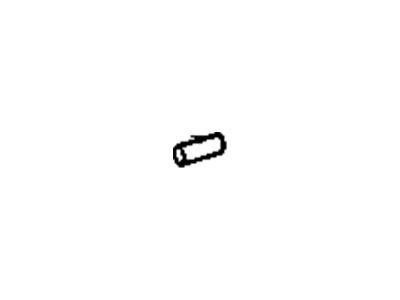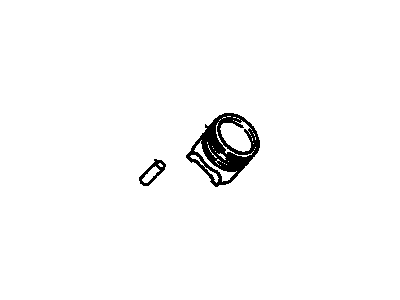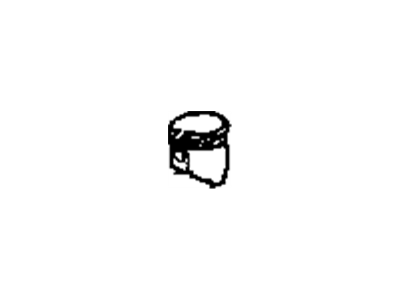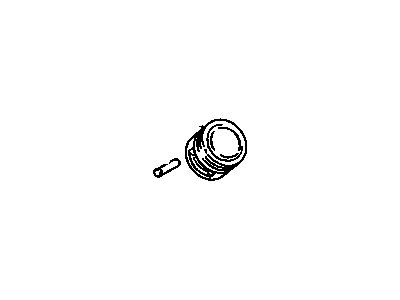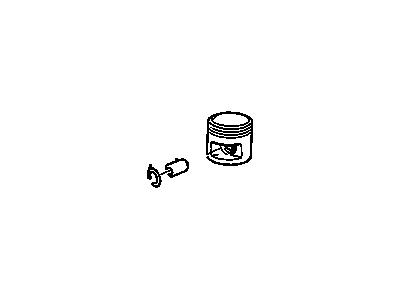
My Garage
My Account
Cart
Genuine Buick Skylark Piston
Engine Pistons- Select Vehicle by Model
- Select Vehicle by VIN
Select Vehicle by Model
orMake
Model
Year
Select Vehicle by VIN
For the most accurate results, select vehicle by your VIN (Vehicle Identification Number).
17 Pistons found
Buick Skylark Piston Asm,(W/ Pinion)(Std)
Part Number: 24575963$51.36 MSRP: $103.56You Save: $52.20 (51%)Buick Skylark Piston Asm,(W/ Pinion)
Part Number: 24505806$60.44 MSRP: $121.88You Save: $61.44 (51%)Buick Skylark Piston Asm,W/Pinion
Part Number: 24501065$29.57 MSRP: $124.15You Save: $94.58 (77%)Ships in 1-2 Business Days
Buick Skylark Piston
In Buick Skylark category of vehicles, the piston is very useful in converting the energy released in the combustion process into mechanical force, or power that pushes the vehicle forward. Every man made Indy 500 car such as the Buick Skylark has pistons which slide inside it to act on the crankshaft so as to facilitate motion. The models in the Buick Skylark have piston that are usually manufactured using aluminum alloy, these provide strength to the pistons as well as lightweight thus providing efficiency to the automobile. In various years of production the Buick Skylark might have used various types of the pistons that it fitted to its car depending on the type of the engine power, features or even shifts in automotive power and features. Often used are trunk pistons suited for side loads generally experienced in Petrol as well as Diesel engines. Some of these pistons comprise of oil rings which are so located in order to effectively feed the crank case and minimize wear. In some models which are considered high-performance or specialty models the Buick Skylark might have incorporated slipper or even racing pistons hence possessing light weight properties which support balance and high mechanical efficiency at higher RPM. Every piston type that has been used in the making of Buick Skylark has been chosen to meet the required performance characteristics, handle the pressure and temperature, which is characteristic of an engine, and add to the overall durability and, of course, the fuel efficiency of the vehicle.
Each OEM Buick Skylark Piston we offer is competitively priced and comes with the assurance of the manufacturer's warranty for the part. Furthermore, we guarantee the speedy delivery of your orders right to your doorstep. Our hassle-free return policy is also in place for your peace of mind.
Buick Skylark Piston Parts Questions & Experts Answers
- Q: What are the considerations for replacing or reusing pistons on Buick Skylark?A:In most cases of high mileage engines, original pistons need replacement due to the requirement of boring the cylinders to a larger size for normal wear compensation; however, if the cylinder walls only need slight finish honing, old pistons may be reused if they are in good condition. Clean connecting rods and pistons using a cleaning solvent and dry them with compressed air if available, avoiding wire brushes or abrasive tools on any piston part. Use a groove cleaner tool to clean the ring grooves of the piston, ensuring that oil ring holes and slots are also clean. Inspect the rods for twisting, bending, nicks, or cracks, as any issues found necessitate replacement with new rods. Check the piston for cracked ring lands, skirts, or pin bosses, and look for worn or wavy ring lands, scuffed or damaged skirts, and eroded areas at the top; any damaged pistons or those showing excessive wear should be replaced. Examine the ring grooves for nicks that could cause the rings to hang up. While the piston is still connected to the connecting rod, swivel the rod back and forth to assess the degree of difficulty, comparing all piston/rod assemblies; if the rods appear loose on the piston pins and move with little or no drag, the piston pins are worn and need replacement. If the cylinder block requires any machine work, including finish honing, the machinist will likely want the pistons available to check piston-to-bore clearance as the cylinder walls are cut, making this measurement critical and best left to the machine shop.
